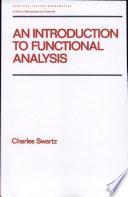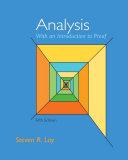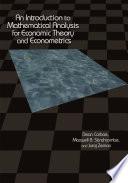Originally published in 1997, An Introduction to Mathematical Analysis provides a rigorous approach to real analysis and the basic ideas of complex analysis. Although the approach is axiomatic, the language is evocative rather than formal, and the proofs are clear and well motivated. The author writes with the reader always in mind. The text includes a novel and simplified approach to the Lebesgue integral, a topic not usually found in books at this level. The problems are scattered throughout the text, and are designed to get the student actively involved in the development at every stage. "This Introduction to Mathematical Analysis is a very carefully written and well organized presentation of the major theorems in classical real and complex analysis. I can find no fault whatever pertaining to the level of rigor or mathematical precision of the manuscript. All in all I think this is a fine text." Reviewer from Portland State "To summarize I think this text is very good. Its strengths are many. The choices of the problems and examples are well made. The proofs are very to the point and the style makes the text very readable." Reviewer from Michigan State "H. S. Bear seems to be one of the best kept secrets around. His writing in general is superb. This book is a well organized first course in analysis broken into digestible chunks and surprisingly thorough. It covers the basic topics and then introduces the reader to complex analysis and later to Lebesgue integration." James M. Cargal Professor Bear obtained his degree at the University of California, Berkeley with a thesis in functional analysis. He has held permanent positions at several major western universities, as well as visiting appointments at Princeton, the University of California, San Diego, and Erlangen-Nurnberg, Germany. All of these venues involved a ridiculous amount of bad weather, so he went to the University of Hawaii as department chairman in 1969. He served as department chairman for five years, and later served a term as graduate chairman. He has numerous research and expository publications in the areas of functional analysis, real and complex analysis, and measure theory.
I can find no fault whatever pertaining to the level of rigor or mathematical precision of the manuscript. All in all I think this is a fine text." Reviewer from Portland State "To summarize I think this text is very good.










